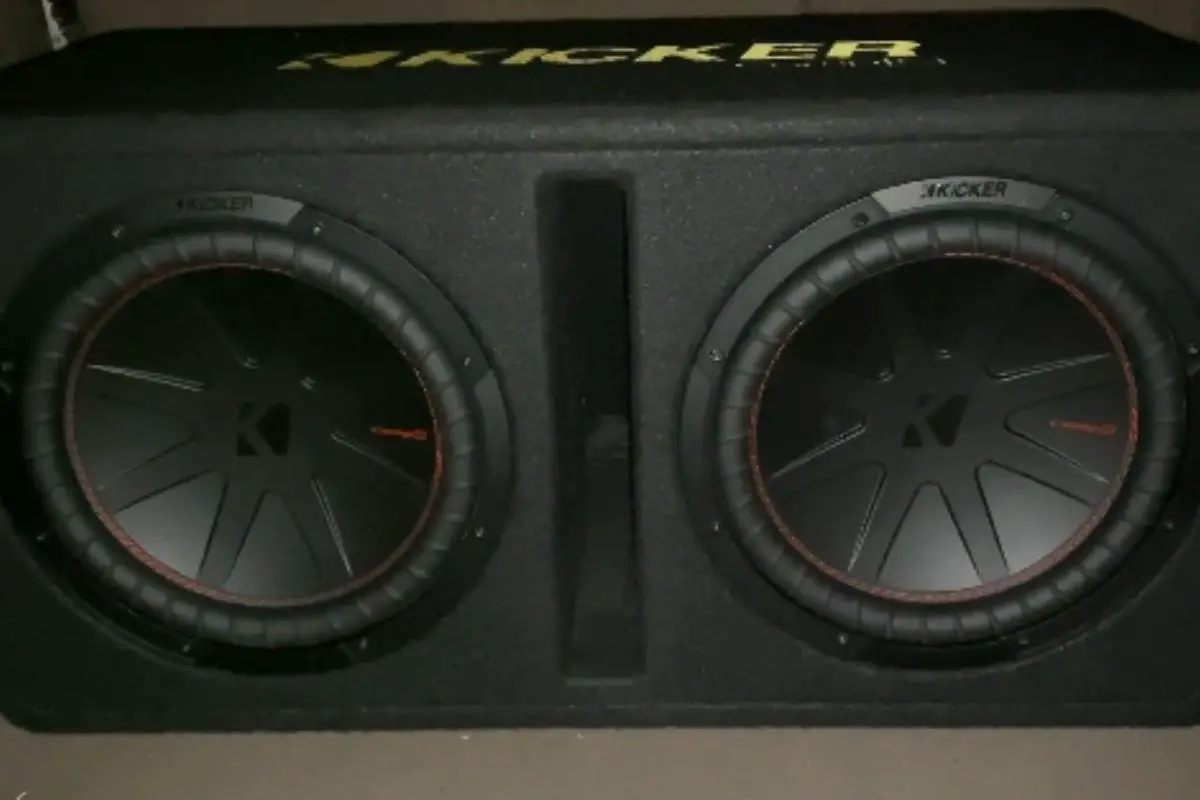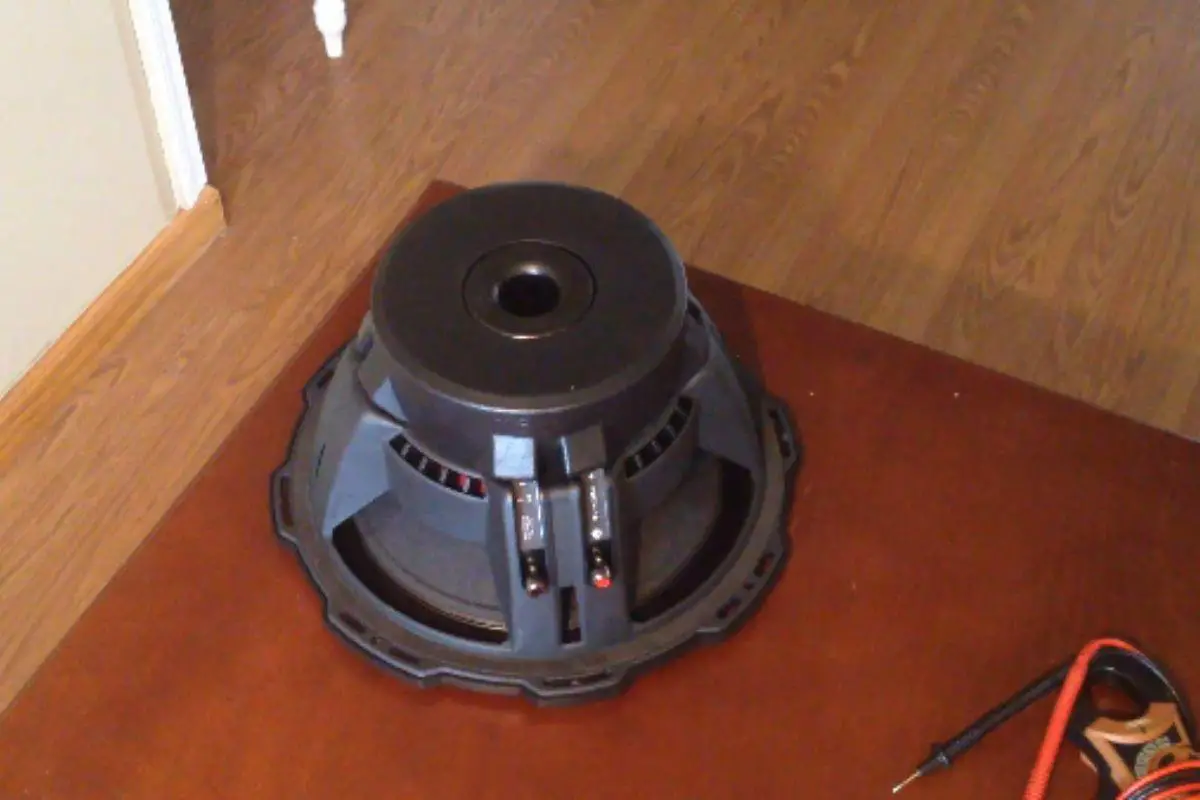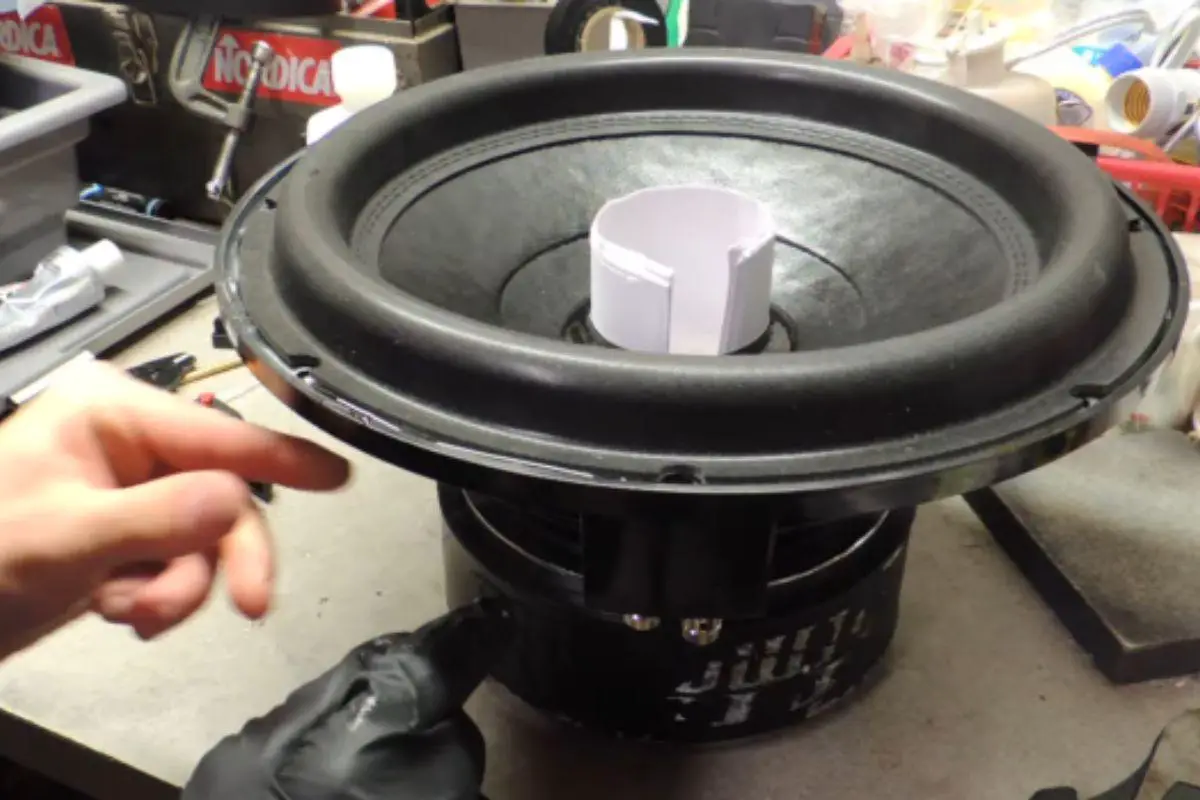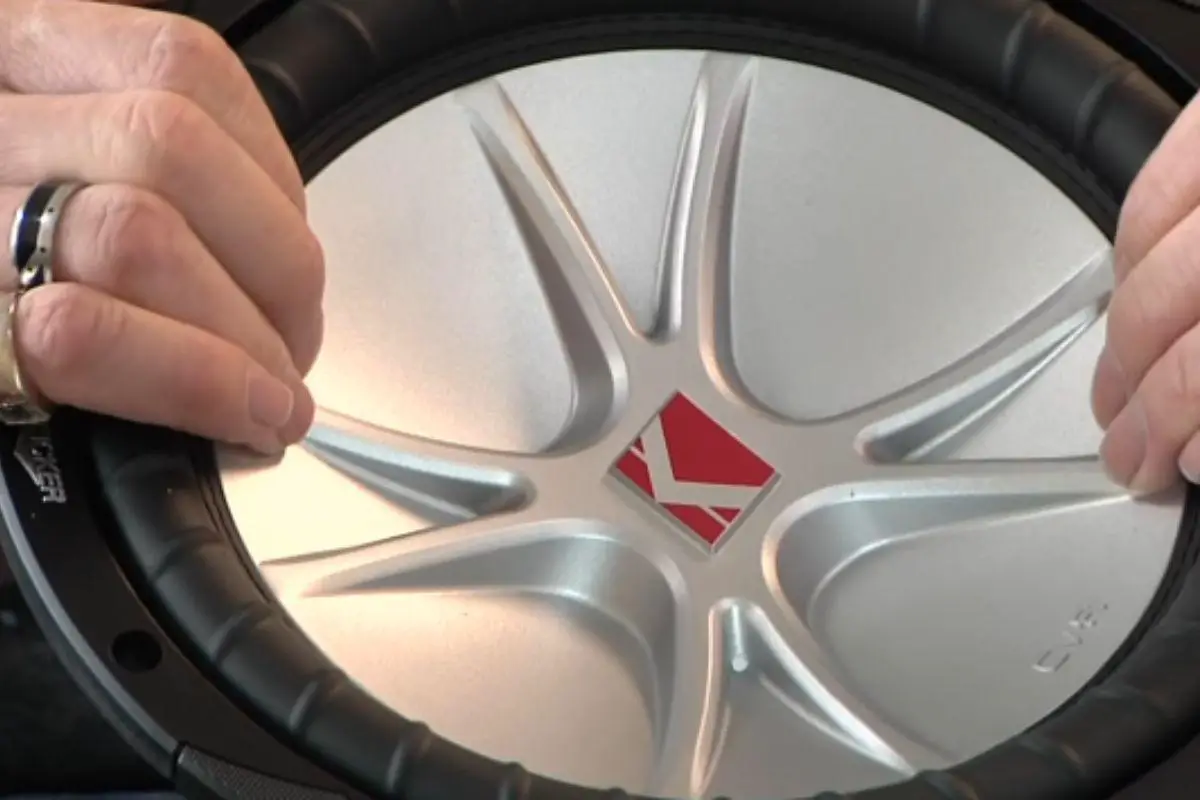Subwoofers in car audio systems can start making annoying rattling or buzzing noises. This rattling sound can reduce your listening pleasure. But why does my sub rattle? In most cases, finding the cause is not too hard, and you can fix it yourself. Here are some common reasons for a rattling subwoofer, and tips to solve the problem.
Why Does My Sub Rattle Answered
1. Loose Subwoofer Mounting
One of the biggest reasons for rattling is when the subwoofer is loose in its mounting location. Subs need to fit tightly so they don’t shake and hit nearby surfaces. Over time the mounting screws can work loose from vibration. Then the sub starts to rattle around.
To fix this, take the sub out and check the screw holes for any stuck debris. Use good quality new screws to securely attach the sub. Make sure it has no wiggle room or ability to vibrate. Properly tightening the sub in place will typically stop any rattling from a loose install.
2. Damaged Subwoofer Surround
The flexible surround that connects the cone to the basket allows the cone to move properly. If the surround cracks or wears out, the cone can rub on the basket when playing music. This causes annoying buzzing rattles.
Look at the surround carefully for any rips, splits, or damage. If you see damage, the only real solution is to replace the surround or the whole subwoofer. Putting in a quality new surround kit will normally fix any rattling from a bad surround.
3. Voice Coil Rubbing on Pole Piece
The voice coil in a sub moves in a magnetic gap. If the coil starts rubbing on the pole piece, it creates a nasty buzzing or scratching rattle.
This can happen if the cone gets damaged or bent. Inspect the voice coil area and shine a light inside the gap looking for signs of rubbing. A pro may be able to realign the coil if it’s rubbing. Otherwise, you may need a new sub.
4. Debris in the Gap between the Voice Coil and Magnet
Little pieces of debris can get into the tight gap where the voice coil moves. Things like metal bits or dirt can get stuck in there. When the coil moves it scrapes on the debris, making the rattle.
Use compressed air or a vacuum to thoroughly blow out any gunk inside the voice coil gap. Be very careful not to touch or harm the delicate coil windings. With the debris gone the scratchy rattle should disappear.
5. Amplifier Clipping
When an amp is pushed too hard the signal gets distorted, with too much boosted bass and treble. This clipping effect makes the sub move too far, causing it to rattle at high volume.
Turn down the amplifier’s gain control so it’s not sending a clipped signal. Use an amp with enough clean power to handle the sub properly. This prevents distortion and stops related rattling issues.
6. Mechanical Driver Failure
Sometimes the cause of a rattling woofer is mechanical failure of its components. Things like a bent cone, bad spider, worn suspension, or shorted voice coil can make it rattle.
You may need to bring it to a repair shop to pinpoint which part failed. Fixing or replacing damaged mechanical parts may stop the rattle and get it working right. But it’s often cheaper to just replace the whole subwoofer.
How to Diagnose the Exact Source of Sub Rattling

Why does my sub rattle? To fix a rattling subwoofer, you need to figure out the specific reason it’s happening. Different problems need different solutions. Follow these steps to pinpoint the cause of the noise and repair your sub:
1. Isolate the Subwoofer
Turn off your system and disconnect the sub from the amp. Hook it up to a different working amp by itself. Power it on and listen closely for rattling. This shows if the issue is with the sub or another component.
2. Check Mounting
With the sub running solo, inspect the mounting thoroughly. Press firmly on the sub box while playing test tones to feel for any vibration or movement that could cause rattling. Tighten or shim the sub as necessary.
3. Inspect Components
Remove the subwoofer and look closely at all the parts for damage, gunk, or obvious problems. Look for ripped surrounds, bent baskets, loose spiders, etc. Address any physical defects found.
4. Test with Sweeps
Power the sub with a tone that sweeps all bass frequencies. Note if rattling happens at certain pitches. This can identify resonance issues, gap rub, or failed components.
5. Localize Noise Source
With the sub playing test tones, put your head near it and pinpoint exactly where the rattle is coming from. Determine if it’s the surround, spider, voice coil, or other driver parts.
6. Assess Repairability
Figure out if you can fix the rattle yourself, or if you need professional subwoofer repair or replacement. Consider the costs compared to just upgrading to a new woofer.
Following these steps will identify why your sub is rattling specifically. Knowing the root cause lets you take action to resolve the problem. Then you can get back to clean, rattle-free bass.
Common Noises from a Rattling Subwoofer
When a subwoofer rattles, it can make different noises depending on the issue:
- Buzzing – This often means the voice coil is rubbing or debris is in the gap. Sounds like a buzz along with the bass.
- Rattling – Why does my sub rattle? Rattling can be from a loose subwoofer mount or surround allowing shaking. Sounds like a metallic rattle.
- Rubbing/Grinding – Points to problems like surround damage or coil misalignment. Makes a grinding or rubbing noise.
- Popping – Debris or damage in the voice coil gap can create a popping sound with bass hits.
- Knocking – Too much driver movement from clipping or resonance causes a knocking or banging noise.
- Humming – Electrical interference can create a 120Hz hum unrelated to the audio signal.
- Distortion – A damaged subwoofer part can introduce audible distortion at high volumes.
Identifying the specific noise heard guides you to the area needing repair. This saves diagnostic time so you can get back to enjoying your system.
Step-by-Step DIY Subwoofer Rattle Fixes

Here are some DIY steps to fix common sub rattle issues:
1. Tighten Subwoofer Mounting
- Remove the subwoofer and check screw holes for gunk
- Use quality new mounting screws
- Tighten down the subwoofer securely with no movement
2. Replace Surround
- Remove the old surround by heating the adhesive
- Clean the cone and basket
- Carefully glue the new surround on
3. Clean Out the Voice Coil Gap
- Use air and vacuum to remove debris
- Clean the gap thoroughly without touching the coil
4. Shim or Realign Voice Coil
- Insert thin shims to realign the coil
- May need professional repair
5. Reduce Amplifier Gain
- Turn down gain control to prevent clipping
- Use a properly sized amp with clean power
6. Upgrade Subwoofer
- For big damage, replace with a quality new sub
- Compare repair cost to new woofer price
With some DIY repairs, you can likely fix common rattles. Seek pro subwoofer repair if problems continue. Investing in a good sub and setting gain properly will help minimize rattles.
When to Consider Subwoofer Repair or Replacement
Small rattles from loose mounts or torn surrounds can often be fixed yourself. But once a sub exhibits serious mechanical issues, repair or replacement may be better.
Here are signs it may be time to repair or upgrade your rattling sub:
- Visible Damage – Rips, dents, or scratches causing excessive cone movement
- Bad Sound Quality – Noticeable distortion or lack of bass
- Internal Failure – Warped voice coil, bad spider, etc.
- Recurring Rattles – Returns quickly after repairs
- Age – Over 5-10 years old and heavily used
- Cost vs New Sub – Repair price approaches new sub cost
While cosmetic damage may not affect function, performance problems indicate mechanical issues needing pro service. Compare repair estimates to new subwoofer costs. A new woofer often makes more sense long term.
Professional Subwoofer Repair Options

For major subwoofer damage beyond DIY repair, professional services are available. Here are some options:
i. Local Speaker Repair Shop
Find a local store offering subwoofer repairs and re-coning. They can diagnose issues and quote costs.
ii. Manufacturer Repair Center
Check if the manufacturer has a service center to handle repairs and warranty work.
iii. Online Repair Services
Mail-in speaker repair companies can fix most brands and models. Get shipping quotes for big items.
iv. Mobile Technicians
In some areas, mobile techs will come to you for subwoofer diagnostics and repairs. Convenient but may cost more.
v. Replacement Parts
Just buy the damaged subwoofer components needed for DIY repair. Typically the most affordable option.
Research reviews and pricing to find a reliable subwoofer repair solution for your budget. Quality repairs can restore your sub to peak performance.
Buying a New Subwoofer to Fix Rattling
Given high repair costs, replacing your rattling sub with a new woofer can be smart. Here are new sub tips:
- Set a Budget – Decide how much you can spend on a new sub.
- Check Specs – Match power handling, impedance, frequency response, etc. to your system.
- Compare Brands – Research top brands like JL Audio, Rockford Fosgate, Kicker, etc.
- Read Reviews – Check review sites for real user feedback.
- Consider Upgrade – If adding a new amp too, you may upgrade the subwoofer model.
- Verify Warranty – Choose at least a 1-year manufacturer defect warranty.
Taking time to pick the right new sub will help avoid future rattling. Follow proper gain setting during installation for rattle-free bass.
FAQ: Common Subwoofer Rattling Questions
Q: Why does my sub rattle loudly at high volume?
A: Loud rattling is often from a clipped amp signal, causing too much driver movement. Reduce gain and increase headroom to prevent distortion.
Q: Can I replace a torn surround myself?
A: With some DIY skills, you can swap a damaged surround using a repair kit. Carefully remove the old one and glue on the new surround securely.
Q: Is professionally repairing an old sub worth it?
A: Compare the repair cost to a comparable new subwoofer price. If over 5-10 years old, replacement is often better than fixing an aged woofer.
Q: How do I stop rattling from trunk vibration?
A: Use sound damping, reinforce the box, and securely mount it to prevent panel vibration. Also, tighten all mounting hardware so the sub itself isn’t rattling.
Q: Why is my sub making a loud humming noise?
A: This is likely electrical system interference, not a subwoofer issue. Install a ground loop isolator to block noise from reaching the amp and speakers.
Why Does My Sub Rattle? Final Thoughts
Figuring out why your particular sub is rattling is key to fixing it properly. With the right repairs or a new woofer, you’ll be back to clean bass in no time.
Also read:
Best 8 Inch Subwoofer Reviews: Unleash Thunderous Bass!
Discover the Best 10 Inch Subwoofers for Mind-Blowing Bass
Best 12 Inch Subwoofer: Top 9 Picks Revealed!

Kenny Owen is an acclaimed audio expert and longtime enthusiast with a deep passion for sound technology. With over 15 years of experience in the car and home audio industry, Kenny has established himself as a trusted authority on everything from speaker setups and amplifier configurations to the latest audio equipment and innovations.
Through his engaging writing style and meticulously researched articles, Kenny shares his vast knowledge on optimizing audio systems for superior sound quality. He provides in-depth tips and tricks for achieving the best listening experience, whether it’s tuning a car’s audio system for an immersive musical journey or creating a high-fidelity home theater setup. Additionally, Kenny’s comprehensive buying guides empower readers to make informed decisions when investing in audio components, ensuring they get the most bang for their buck.

Kenny Owen is an acclaimed audio expert and longtime enthusiast with a deep passion for sound technology. With over 15 years of experience in the car and home audio industry, Kenny has established himself as a trusted authority on everything from speaker setups and amplifier configurations to the latest audio equipment and innovations.
Through his engaging writing style and meticulously researched articles, Kenny shares his vast knowledge on optimizing audio systems for superior sound quality. He provides in-depth tips and tricks for achieving the best listening experience, whether it’s tuning a car’s audio system for an immersive musical journey or creating a high-fidelity home theater setup. Additionally, Kenny’s comprehensive buying guides empower readers to make informed decisions when investing in audio components, ensuring they get the most bang for their buck.

